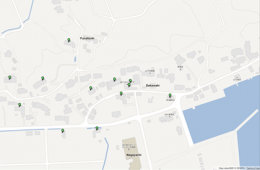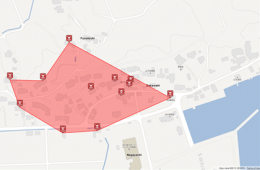Saving lives with Google Maps -- disaster-tracking software developed by Abertay student

Emergency responses to natural disasters could be coordinated more quickly and save lives thanks to new software developed at the University of Abertay Dundee.
Using home broadband routers, student David Kane’s prototype programme can ‘ping’ thousands of addresses to check whether buildings are still standing.
The system shows live data on ‘safe’ areas using Google Maps. Within seconds, any disaster can be detected, mapped and its progress tracked – and support efforts targeted to the areas in greatest need at any moment.
Disasters like the 2011 earthquake and tsunami in Japan showed that coordinating responses is incredibly difficult without visual communication such as helicopters and people reporting in every location affected. David’s system could automate the whole process, providing a constant stream of up-to-date information.
David, a Computing & Networks student at Abertay University, said: “Responding to disasters is immensely difficult and any extra accurate information can make the difference in saving lives.
“I wanted to prove if it was possible to use an ordinary piece of technology we all have – a home broadband router – to map natural disasters in real-time.”

His final year project is part of the Abertay Digital Graduate Show on Friday 18th May, 5-8pm, in Abertay’s Kydd Building and Hannah Maclure Centre.
David added: “The idea definitely works and I’ve built it so anyone can take this code and improve it. It’s certainly not finished, but everything is open source compatible and using XML can plug straight into existing disaster management systems.
“Once the Abertay Digital Graduate Show is finished, I’ll release all the code and let the community take this project on. I just hope my work can make a difference in the future.”
Dr. Ian Ferguson, Abertay lecturer and David’s project supervisor, said: “Using existing computer infrastructure to retrieve information about natural disasters as they strike and develop could be a major step forward.
“Any extra information can improve emergency responses in complex crises, so projects like this could have a huge impact using relatively simple technological tools.
“I set the project as a deliberately difficult challenge, which David has responded to by building a very stable, very professional piece of software. The concept definitely works – the challenge is how this can now be developed.”
The software works by ‘pinging’ home broadband routers and matching this information with an address supplied by the home owner. That address is converted to longitude and latitude values and displayed in Google Maps.
With the support of internet service providers, the opt-in supply of address data could be removed and the whole system automated.
The basic principle of the software prototype could also be applied to mobile phone networks, if an app was developed to support this. And as geolocation runs on satellites, the disaster tracking could remain accurate even as phone networks go down.
Provided by University of Abertay Dundee


















